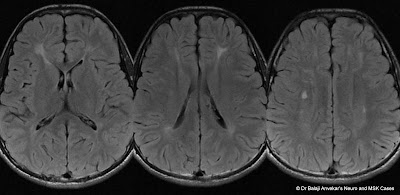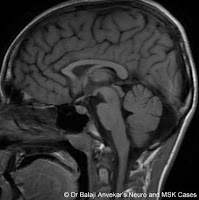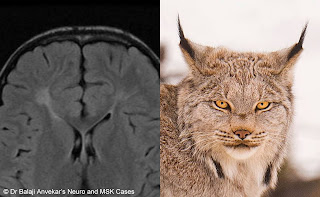Ears of the lynx sign
The ears of the lynx sign refers to an abnormal bilateral symmetric cone-shaped hyperintensity on FLAIR and T2w images at the tip of the frontal horns of lateral ventricles. The abnormality corresponds to the region of forceps minor which resembles the tufts of hair crowning the ears of a lynx. Sagittal T1w images show an associated thin stripe of corpus callosum.
The sign is typically seen in hereditary spastic paraplegia with thin corpus callosum (HSP-TCC), a form of hereditary spastic paraplegia associated with mutations of the spastic paraparesis gene 11 (SPG11) on chromosome 15. The spatacsin vesicle trafficking associated (SPG11) gene, codes spatacsin.
The sign may also be seen in SPG15, another of the hereditary spastic paraplegias, which is caused by a mutation in the zinc finger fyve domain-containing protein 26 (ZFYVE26) gene, encoding spastizin.
This sign has also been described in chronic cases of Marchiafava-Bignami disease.





Δεν υπάρχουν σχόλια:
Δημοσίευση σχολίου
Σημείωση: Μόνο ένα μέλος αυτού του ιστολογίου μπορεί να αναρτήσει σχόλιο.